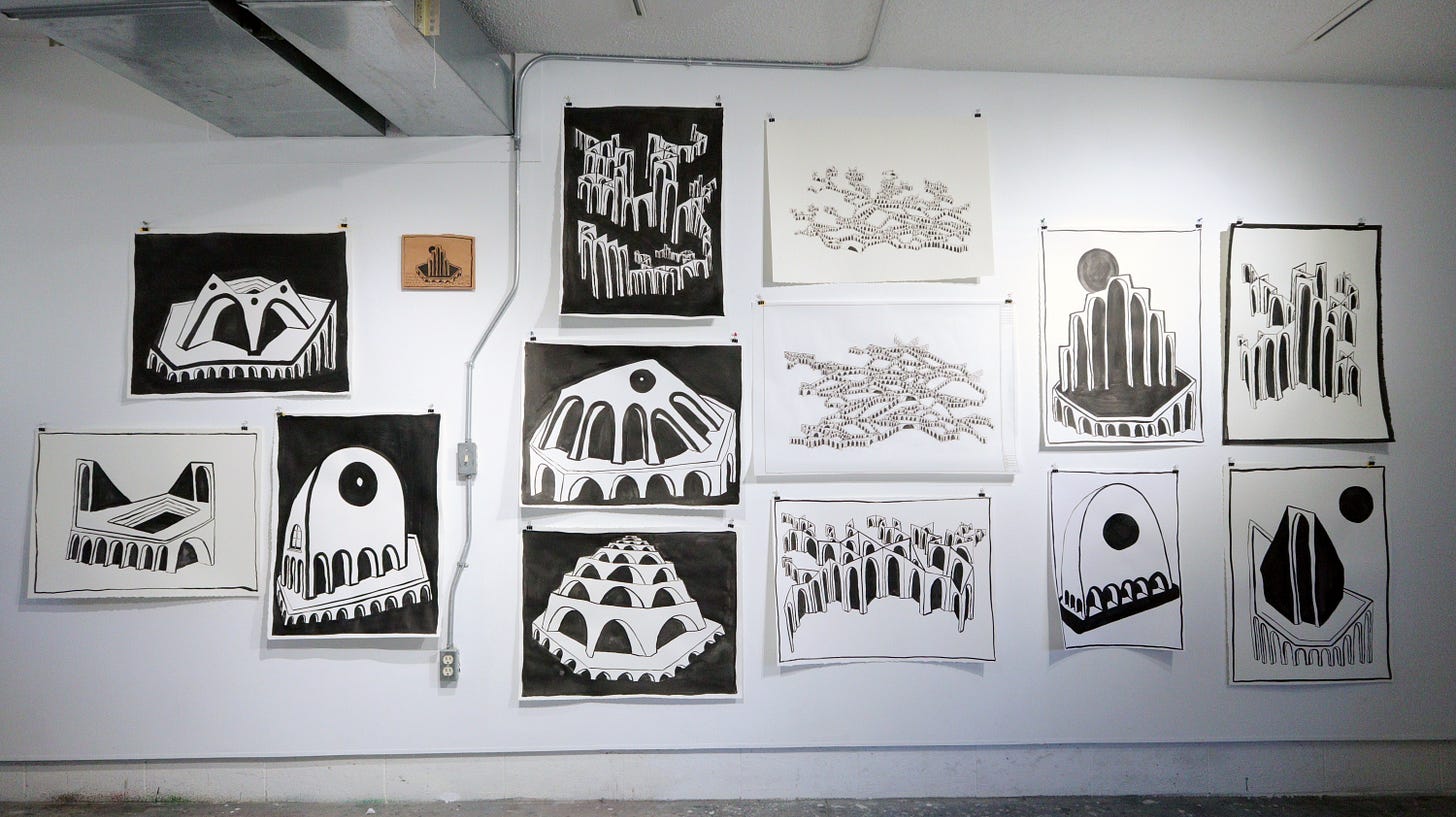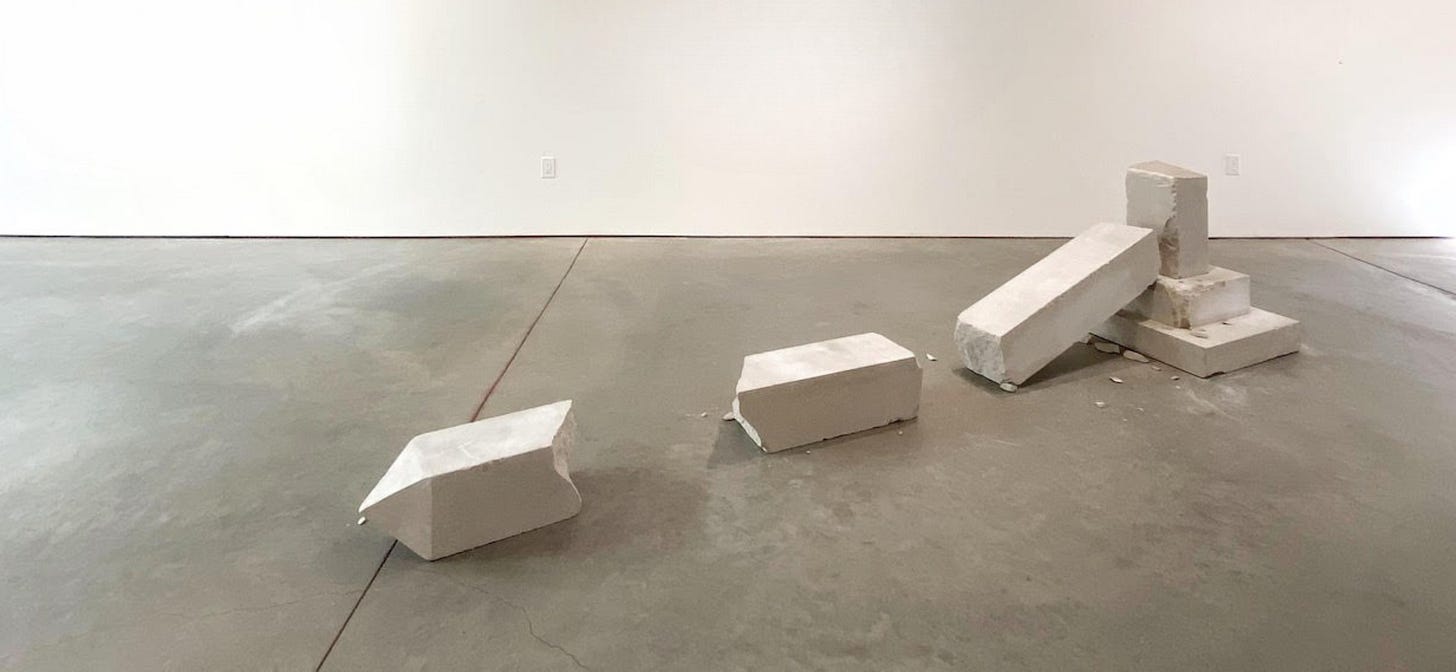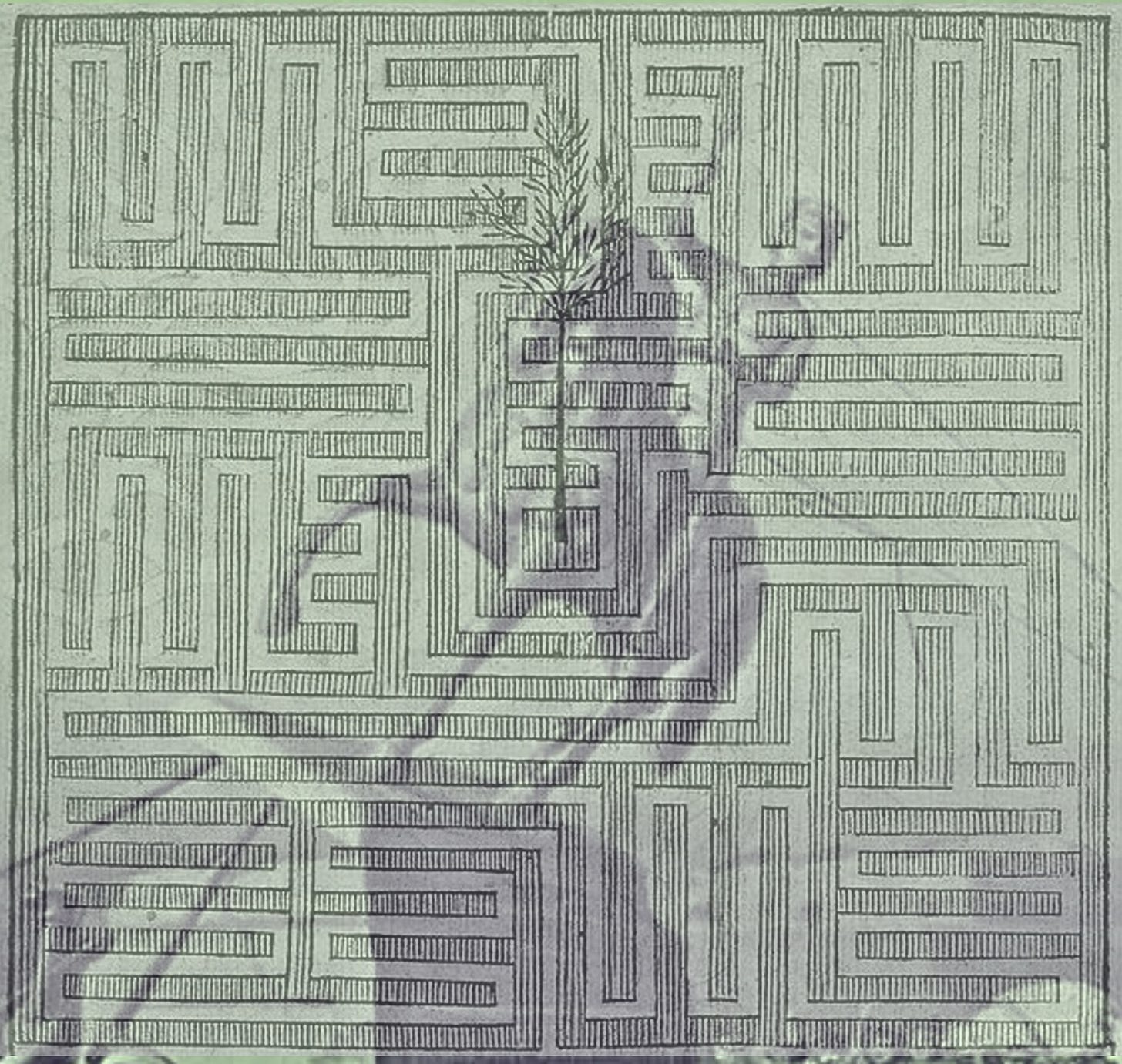Studio Field Notes:
Labyrinths, Follies, and Other Misaligned Structures
During my residency at Kimmel Hardin Center for the Arts, I spent time with an idea that’s been quietly shaping my work for years: the labyrinth and the folly, not as decoration or destination, but as conceptual tools. I often find myself chasing ideas sparked by the writer Jorge Luis Borges, whose work I return to again and again.
These architectural structures always resist clear function for me. A labyrinth delays, redirects, absorbs time. A folly stands for something abstract—an intentional failure of utility, architecture for the sake of image.
Amid the flat, open landscape of the Great Plains, these ideas took on new grounding. I found myself drawing constantly, partly from the land itself, partly from the unconsciousness. Defunct grain elevators, rusted irrigation systems, and crop rows defining new topographies on the land they occupy. They all began to feel like contemporary follies and labyrinths, testaments to systems that no longer serve their original purpose, if they ever truly did.
The drawings I made there operate like field notes or speculative ruins. I’m less concerned with what they “represent” and more interested in how they behave: fragments of imagined structures, misaligned monuments, failed blueprints for impossible sites.
This body of work now encompasses sculpture, ceramics and drawings. Eager to see where it develops in the coming months, especially as I head off to the Kentucky Governor’s School for the Arts this summer.

Back in Philadelphia, I’ve kept up a daily drawing practice. Some of it is observational: plein air studies, daily objects, knickknacks. I admire artists who commit to the everyday practice; mine tends to come and go. I’ll spend weeks drawing, then let half a year pass without picking up a pencil or at least it feels that way. Lately, by committing to the process, I’m reminded how much of it is muscle memory. It’s an active exercise in seeing, translating, and mark-making. I’ve been keeping two sketchbooks going simultaneously: one for direct observation, the other for imaginative work. One mostly in graphite, the other in ink. The repetition has become both grounding and generative, a way to metabolize what I’ve seen and what I can’t stop imagining.
I need to come clean and give credit where credit is due. This is because I’ve been teaching drawing at Fleisher Art Memorial this spring and I needed to sharpen this practice. The students there are wildly diverse in age, background, and motivation, which has made me more attentive to process and clarity. Being in this environment, accessible, communal, non-institutional, has helped me think differently about the role of drawing. It’s not just preparatory. It’s a form of knowledge, a shared vocabulary, a site for proposing other ways of seeing.
In many ways, the classroom and the sketchbook are aligned: both are spaces to test, to revise, to wonder.

Against the Garden
While working through these forms and ideas, I kept thinking about Trump’s proposed “National Garden of American Heroes”, a surreal and deeply unjust attempt to sculpt a pantheon of idealized American figures. The list of honorees was bizarre in its breadth and selective in its politics: Harriet Tubman beside Antonin Scalia, Kobe Bryant beside Ronald Reagan. It feels like a history book rewritten by an algorithm trained on Fox news and a bronze foundry.
This has been framed as a monument to unity is really a desperate attempt to assert a narrative. One that flattens contradiction, erases context, and encases ideology in stone, especially as the NEA rescinds various grants impacting many communities across the US. It echoed the logic of the folly: spectacle without function. Sadly, in this age without irony.
This vision of national memory as something fixed, sculpted, and controllable runs counter to the questions I ask in the studio and to the principles this country was founded on. The speed at which this administration is moving, directing the NEA to oversee such a project while slashing critical funding for organizations and communities across the U.S., reveals a grift of faux patriotism and autocratic sculpture.


